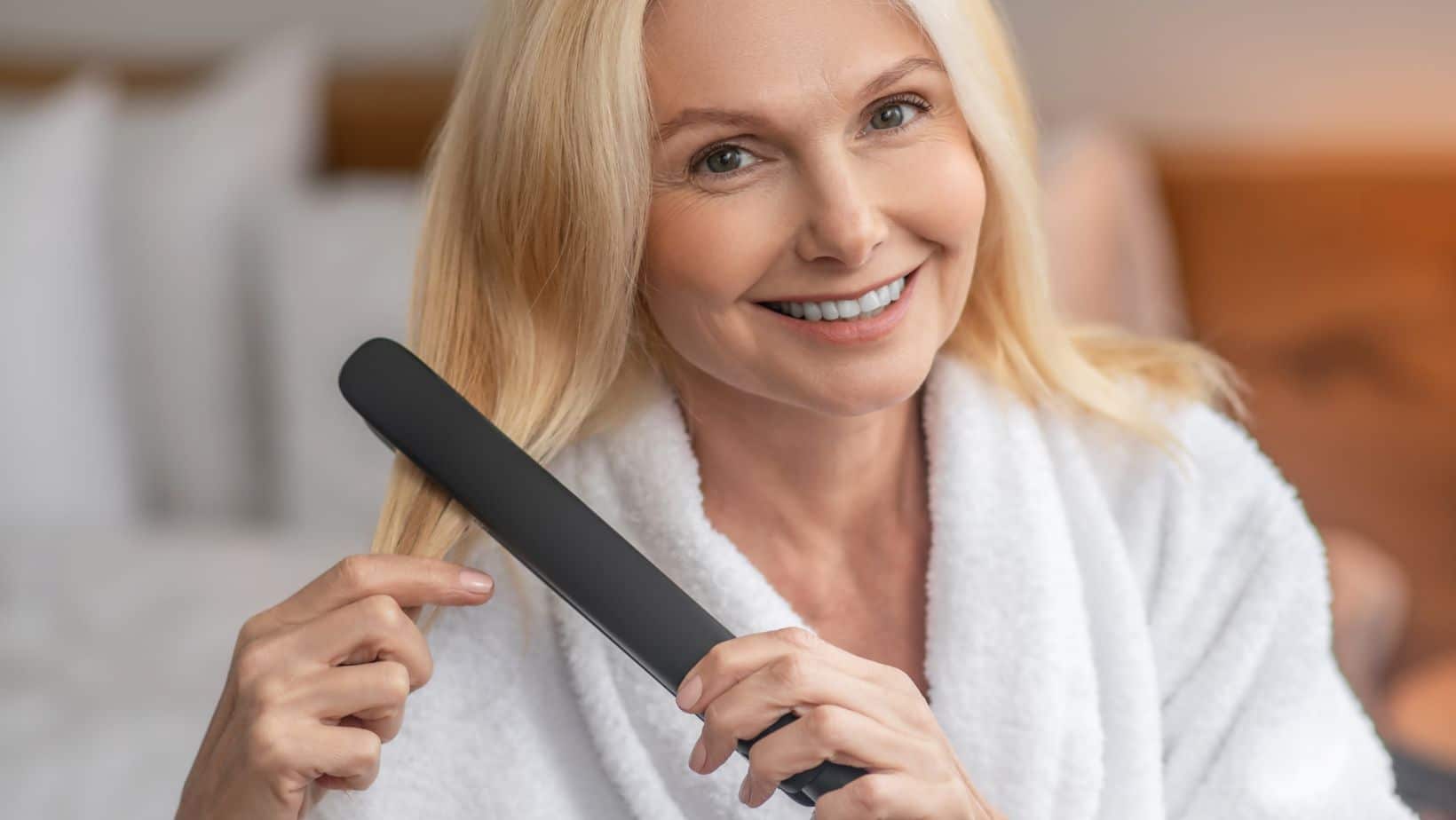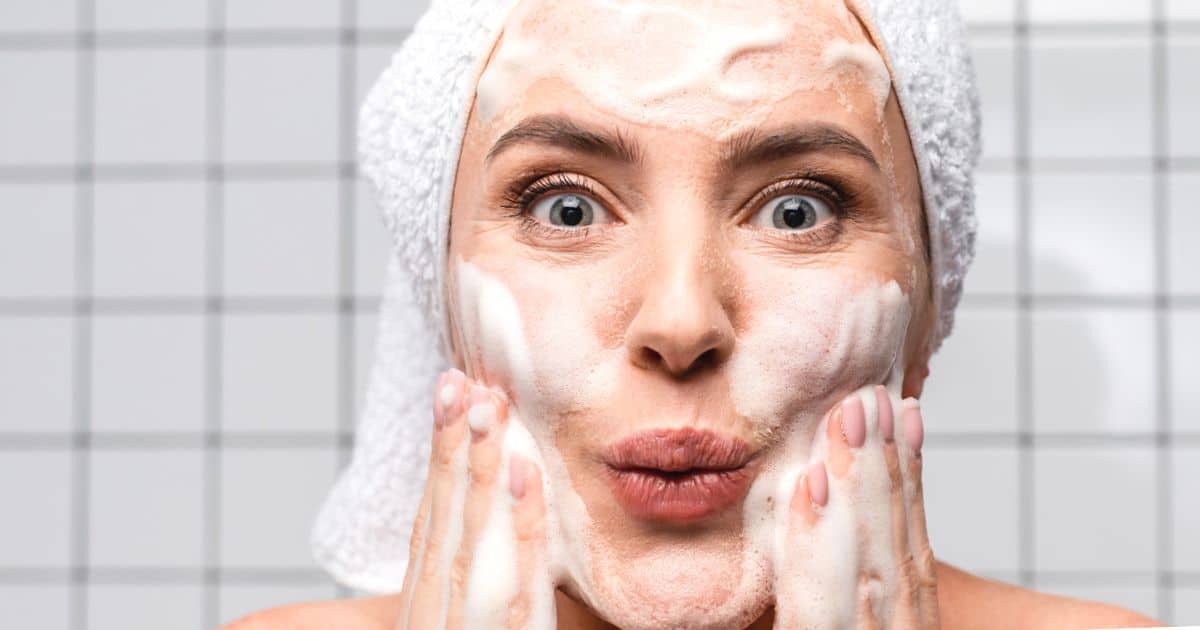Exciting Chemical Peel Benefits for Radiant Skin!
In this article, 12+ amazing chemical peel benefits for radiant, healthy skin, we’ll explore all things chemical peels!
I will cover how chemical peels are beneficial to the skin, the different types of chemical peels, and how to determine which type of chemical peel is best for you.
I will even share some great products available for at-home chemical peels!
Yes! You can DIY a chemical peel in the comfort of your own home!
This post may contain affiliate links. Click to visit policies and disclosures
What is a Chemical Peel?
A chemical peel is a popular cosmetic procedure used to help improve your skin’s overall appearance.
Chemical peeling is a popular, relatively inexpensive, and generally safe method for the treatment of some skin disorders and to refresh and rejuvenate skin.
Chemical Peels offer Mild to Dramatic Results
Chemical peels involve the application of an acid or chemical solution to the face that exfoliates the outer layer of skin cells and reveals the new, healthier layers of skin underneath.
Depending on the specific type of chemical and intensity of the peel or depth of the peel, you can achieve mild to dramatic improvements to your skin’s surface.
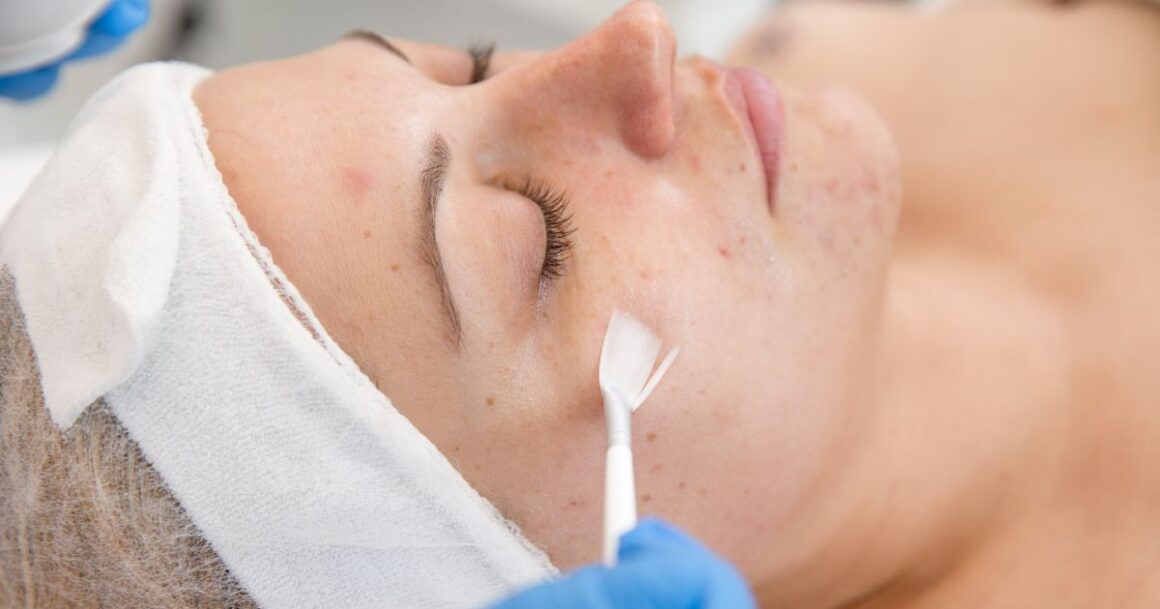
12+ Chemical Peel Benefits for Beautiful Skin!
Chemical peels are among the most beneficial treatments for a variety of skin issues and can help you to achieve smoother, healthier-looking skin.
Here are 12+ benefits of chemical peels:
1. Acne Treatment
Chemical peels can reduce pore size and may decrease sebum production, the oil that causes acne.
That means long-term, you’ll get fewer acne breakouts.
Light to Medium strength chemical peels are great for treating both superficial and deep acne scars that have been left behind by breakouts.
2. Acne Scarring
Light to deep chemical peels are great for treating both superficial and deep acne scars that have been left behind by breakouts.
3. Improves Dullness
Chemical peels can brighten skin tone by removing dead skin cells that can dull the skin’s appearance.
Even light, “lunchtime” peels will do magic to reveal a bright, glowing complexion.
4. Relieves Dryness
Chemical peels remove dry, dead skin cells and reveal a newer layer of healthier skin. This can improve dry skin dramatically.
Using light peeling solution at home 2-3 times per week will do wonders!
5. Pigmentation Issues
Pigmentation issues can be dramatically improved by chemical peeling treatments.
Chemical peeling can help to reduce the appearance of hyperpigmentation, freckles, age spots, scars, and melasma.
6. Improves Sun Damage
Chemical peels help to reduce the effects of sun damage. This can include reducing age spots, discoloration, fine lines, and wrinkles.
7. Treats Skin Texture
Chemical peels help to remove excess dead skin cells, which can leave your face feeling smoother and softer.
Chemical exfoliation also stimulates collagen production, so you’ll see fewer fine lines and wrinkles over time.
8. Stimulates Collagen
Deeper chemical peels are used to create an injury of a specific skin depth with the goal of stimulating new skin growth of collagen. (source)
9. Treats Pore Size
Chemical peels can help reduce the appearance of enlarged pores by removing dirt oil and dead skin cells that can clog and enlarge them.
10. Accelerated Skin Healing
Chemical peels are great for speeding up the healing process of wounds and scars from acne. The chemical exfoliation helps to remove dead skin cells and reveals a newer layer of healthier skin, which helps to heal faster.
11. Reduces Fine Lines, Wrinkles, and age spots (Anti-aging)
Chemical peels can help to reduce the appearance of fine lines, wrinkles, and age spots by removing dead skin cells that can trap bacteria and cause further damage.
The chemical exfoliation also stimulates collagen production, which helps to keep your skin looking younger for longer.
12. Improved Product Absorption
Chemical peels can help improve the absorption of skincare products, such as moisturizers and serums.
This is because chemical peels help to remove dead skin cells that can clog pores and limit the absorption of other products.
13. Treats Precancerous Skin Conditions
Deep chemical peels are typically used to treat patients who have actinic keratosis.
Actinic keratosis is a precancerous skin condition that can lead to squamous cell carcinoma if not treated early.
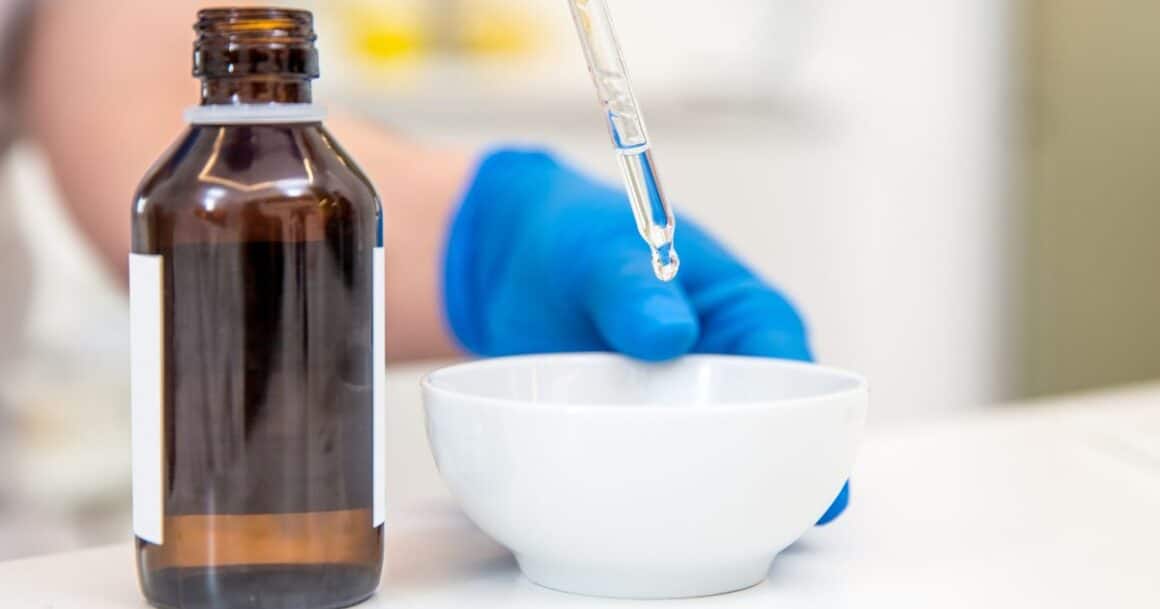
Different Types of Chemical Peels
The chemical peels available can vary from mild to intense.
Chemical Peel Treatments come in three different levels are categorized as light or superficial peels, medium peels, and deep peels.
Light Chemical Peels (The Lunchtime peel)
Superficial or light chemical peels (also called a “lunchtime peel”) are for those looking for a gentler treatment or just starting chemical peels; a light peel is the best option.
The great thing about a superficial or light chemical peel is that it can be done at home!
These products contain Alpha Hydroxy Acids (AHAs) or Beta Hydroxy Acids (BHAs), which help reduce the appearance of wrinkles, acne scars, and skin discoloration.
Light, at-home chemical peels, typically take 10-15 minutes and can be done up to two times per week.
For those seeking more dramatic results, professional chemical peels are the way to go.
Medium, and Deep Chemical Peels
These chemical peels are performed in a doctor’s office or med spa, contain higher concentrations of acids and other ingredients, and require varying lengths of downtime.
These chemical peels are categorized as “medium” and “deep” chemical peels depending on the desired outcome.
Medium Chemical Peels
A medium chemical peel might be the right choice if you have acne scars, deeper wrinkles, and uneven skin color.
Medium-depth peels commonly use trichloroacetic acid (TCA). Medium-strength chemical peels are more aggressive than light or superficial chemical peels.
Recovery and downtime of a medium Depth Chemical Peel
After a medium chemical peel, you’ll experience some redness, stinging, and flaking of the skin similar to those of a deep sunburn.
Deep Chemical Peels
If you’re looking to eliminate deeper wrinkles, scars, or even precancerous growths of actinic keratoses on your skin then a deep chemical peel may be the perfect solution for you.
Deep-depth chemical peels often use phenol or carbolic acid. The recovery time is longer for deeper peels, requiring up to two weeks for a full recovery.
These chemical peels can be used to treat more serious skin conditions, such as severe sun damage or deep wrinkles and pre-cancerous growths.
Deeper chemical peels are typically performed in a plastic surgeon’s office or medical center.
Recovery and Downtime After a Deep Chemical Peel
Recovery time after a deep chemical peel is most often a full two weeks.
Deep chemical facial peels will result in peeling, crusting, skin redness, and discomfort for several days to weeks which may require painkillers prescribed by your doctor.
The good news about a deep chemical peel is that one treatment will produce long-lasting and dramatic results that can last up to 10 years!
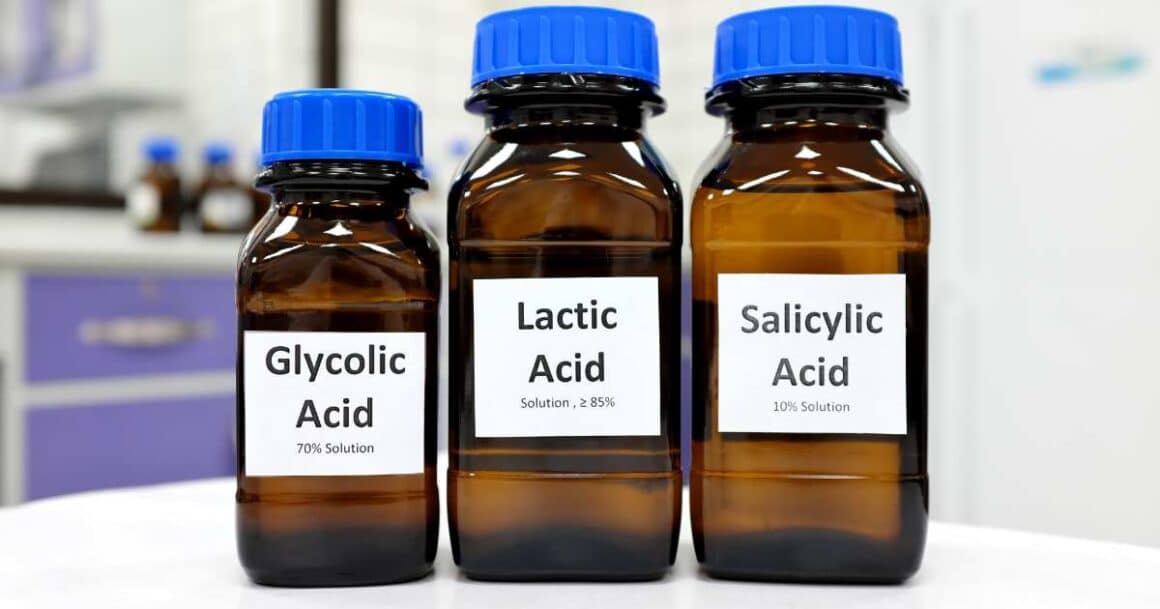
Chemical Peels: Different Types of Chemicals or Acids
A chemical peel can use a variety of chemicals or acids to exfoliate the skin.
These include glycolic acid, salicylic acid, lactic acid, trichloroacetic acid (TCA), and phenol.
Depending on your skin type and condition, your doctor may suggest using one or more of these chemical peels.
Salicylic Acid
Salicylic acid is the most commonly used beta-hydroxy acid in skincare products.
It is generally considered to be a gentler option when compared to other hydroxy acids, such as glycolic acid and lactic acid.
Salicylic acid has long been used to target various concerns, acne, clogged pores, rough skin texture (keratosis pilaris), and skin conditions like mild psoriasis.
When used as part of your skincare regimen, salicylic acid is mild yet effective in exfoliating the skin.
Salicylic acid is a great choice for sensitive skin types. (source)
Different Strengths of Salicylic Acid
Salicylic acid is available in various strengths, from mild (2-6%) to more potent concentrations (20-30%).
In general, it’s best to start with mild chemical peel strengths and work your way up to more potent chemical peel strengths only if necessary.
At Home Salicylic Acid Peels and Skincare Products
Salicylic acid is the most widely used skin acid.
Skincare products containing salicylic acid along with salicylic acid chemical peels are readily available over the counter and can be used safely at home.
Salicylic acid products are available in a wide array of solutions including salicylic cleansers, toners, salicylic pads, and salicylic chemical peeling solutions.
You can also use moisturizers containing salicylic acid.
Glycolic Acid
Glycolic acid is an alpha-hydroxy acid made from sugar cane.
This acid helps to remove dead skin cells as well as unclog pores, allowing for better absorption of products and improved cell turnover.
It also helps to reduce the appearance of wrinkles, age spots, and melasma.
Benefits of Glycolic Acid for the Skin:
- Mild to moderate acne.
- Signs of Aging skin: fine lines, wrinkles, age spots, etc.
- Damage from sun exposure
- Light to moderate acne scaring
- Melasma
Different Strengths of Glycolic Acid
Glycolic acid is available in various strengths, from light (5%) to medium (30%) and deep chemical peel (70%).
The strength of the chemical peel that you should use will depend on your skin type, condition, and desired outcome.
When doing a glycolic acid peel at home it’s best to start with the lowest strength, 5%. As your skin gets used to the chemical peel you can gradually increase the strength if desired.
It’s best to start with one chemical peel every two weeks and then adjust the frequency accordingly.
Your skin should not be red or irritated after a chemical peel, so if this happens you may need to give your skin more time between chemical peels.
At Home Glycolic Acid Peels
Glycolic acid peels can be done at home.
Skincare products containing glycolic acid along with glycolic acid chemical peel solutions are readily available over-the-counter.
These glycolic acid products are available in glycolic toners, glycolic pads, and glycolic acid solutions.
Glycolic acid peels can be used safely with the right preparation and technique.
Lactic Acid
Lactic acid is an over-the-counter alpha-hydroxy acid derived from milk. This acid helps to exfoliate the skin and reduce the appearance of wrinkles, age spots, and melasma.
It also helps to improve skin tone and texture.
Benefits of Lactic Acid on the Skin:
- Brightens dull skin and smooths texture.
- Can help to firm the skin.
- Reduces wrinkles and dark spots
As with glycolic acid and salicylic acid, lactic acid peels can also be done at home.
Different Strengths of Lactic Acid Chemical Peels
Over-the-counter lactic acid products come in different concentrations, from 5% to more than 30%.
At Home Lactic Acid Chemical Peels
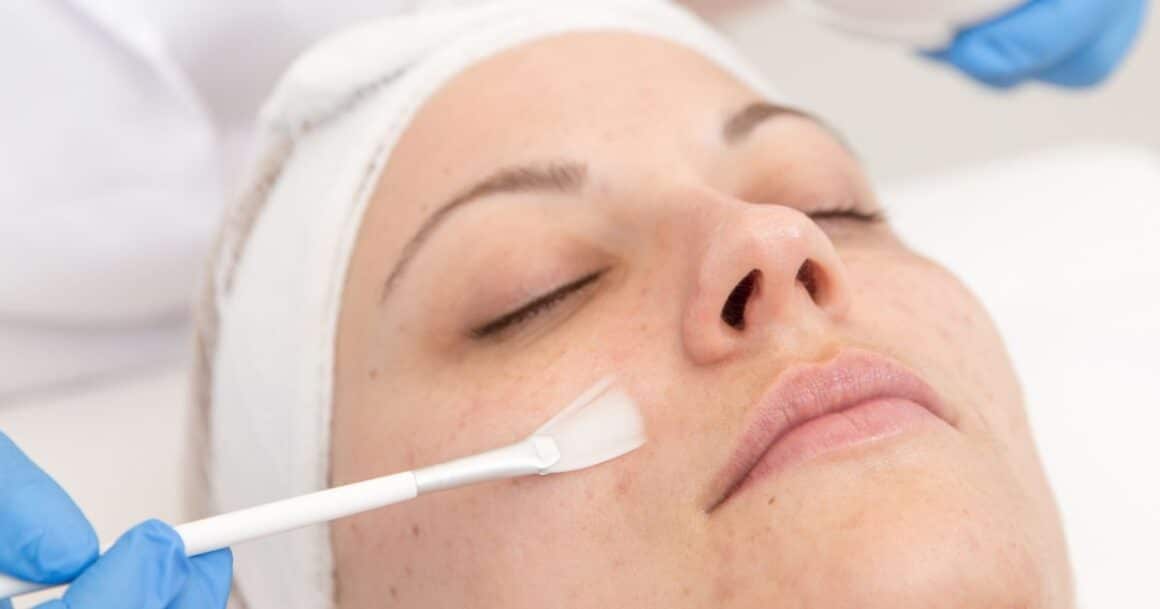
Jessner’s Chemical Peel
Jessner’s peel has been around for over 100 years.
It is a safe and effective solution used to reduce the appearance of acne, and hyperpigmentation, smoothing out fine lines and wrinkles and enhancing skin texture and tone.
The Jessner’s peel is made up of lactic acid, salicylic acid, and resorcinol in a 95 percent ethanol solution. Due to some concerns around the safety of resorcinol, there are also modified Jessner peel solutions made without it. (source)
Jessner’s Chemical Peel Treats the Following:
- Acne
- Hyperpigmentation
- Fine lines and wrinkles
- Skin texture and tone
Different Strengths of a Jessner’s Chemical Peel
The Jessner peel works by removing the top layers of skin and comes in varying depths-superficial, medium, and deep.
A medium peel or deep Jessner’s peel is done is a dermatologist or doctor’s office and requires downtime.
Recovery and Downtime of a Jessner’s Chemical Peel (Medium-Deep)
Immediately after a Jessner’s Medium to deep peel, the skin will be red, swollen, and tight for the first 24 hours or so. After that, the skin will begin peeling.
Generally, it will take 7–14 days to heal after a medium-deep strength Jessner’s peel. (source)
Trichloroacetic Acid (TCA)
TCA peels are often used to treat moderate photoaging, age spots, actinic keratoses, blotchy hyperpigmentation, melasma, and scars, including acne scars.
TCA peels are very effective in treating the overall texture of the skin.
Trichloroacetic acid (TCA) is a chemical peel that penetrates deeper into the skin than other chemical peels.
TCA peels should be done by a dermatologist or at a medical spa.
Different Strengths of a TCA Chemical Peel
TCA chemical peels are available in various strengths.
10%–30% TCA provides a superficial peel, while 30%–40% TCA provides a medium-depth chemical peel, and 50% or above TCA provides a deep chemical peel. (source)
The strength of the chemical peel used will depend on your skin type, condition, and desired outcome, and it should be determined by a dermatologist or skincare professional.
Recovery and Downtime from a TCA Peel
There are generally 10 days of acute recovery following a TCA peel, but this can vary based on the level of the peel.
After a TCA peel, you may experience burning or stinging, redness, irritation, and skin flaking. Skin begins to peel after three days and persists for approximately 10 days. (source)
Related Skincare and Beauty Articles
- The Best Moisturizers for After a Chemical Peel
- The Best Anti-aging treatments
- Best Chemical Peel for Hyperpigmentation
- The Best Primer for Mature Skin
- Aging Gracefully: Healthy Aging Tips
- Why Exfoliate? + The Best Face Exfoliators
- The Best Nighttime Skincare Routine
- Best Face Wash for Dark Spots
- Best Clinique Products for Aging Skin
- Morning Skincare Routine for Mature Skin
- Botox! I’m a believer after 20 years!
Carbolic Acid (Phenol)
Phenol is a chemical peel that penetrates deeper into the skin than other chemical peels.
It exfoliates so deeply that it removes the outer layers of skin, removing damaged skin cells, promoting collagen production, improving acne scarring, and resurfacing the skin.
These deep peels are only done in a dermatologist’s office or a Plastic surgeon’s office.
During a Phenol peel, you may be given a general or local anesthetic, or a sedative.
Recovery time after a Phenol Chemical Peel
The recovery process after a Phenol peel is a minimum, of two weeks.
Following a phenol chemical peel you are most likely to experience throbbing, burning, red, swollen, severely crusted, and peeling skin that lasts for about two weeks. (source)
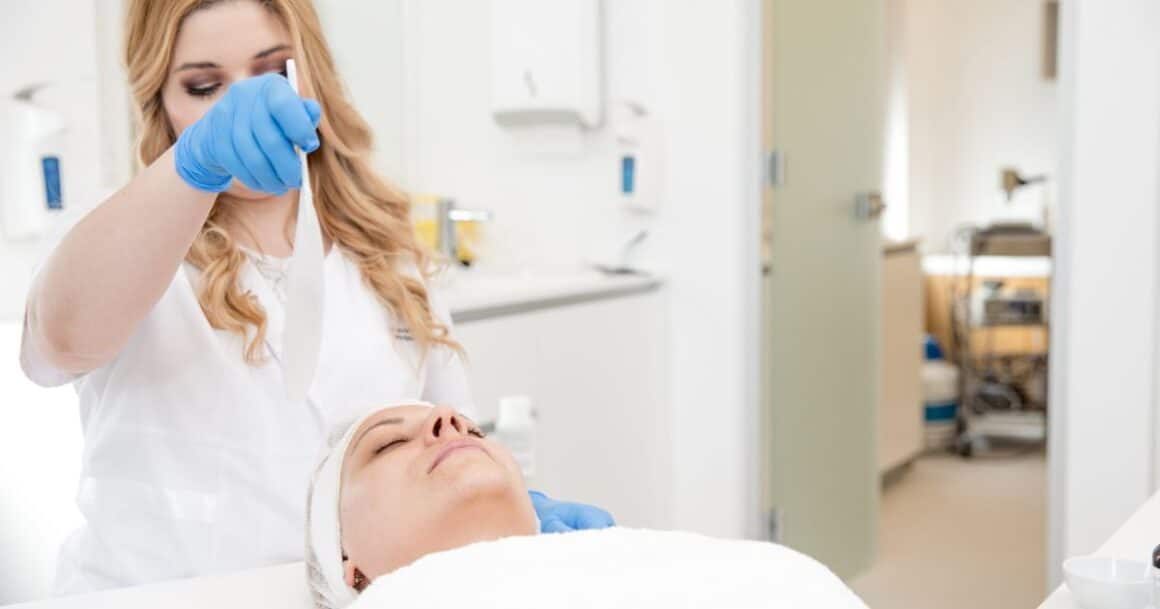
Related article: Why Exfoliate? The Best Face Exfoliators available.
Deciding Which Chemical Peel is Right for You
When deciding which chemical peel is right for you, it’s important to consider your individual goals and expectations.
Light Chemical Peels
If you are just getting started with chemical peels and are looking for a gentle chemical peel with minimal downtime, a light or superficial chemical peel may be the best choice for you.
The great thing about light chemical peels is that you can do them at home and they offer zero or very little downtime.
Light chemical peels do not offer the dramatic results of a medium to deep peel.
Medium-Deep Peels
If you are seeking more dramatic results, a medium or deep chemical peel might be the best option.
Medium to deep chemical peels should always be done by a skincare professional and come with a bit of downtime which is something to consider.
Although you must see a skin pro to receive a medium to a deep chemical peel, and there is downtime and recovery to consider, the results may just be worth it!
FAQs: Chemical Peels (Which are Best for You)
What is a chemical peel?
A chemical peel is a cosmetic treatment that involves applying a chemical solution to the skin to exfoliate and eventually peel off, revealing smoother, rejuvenated skin underneath.
Are chemical peels safe?
When performed by a trained professional, chemical peels are generally safe. However, it’s crucial to follow pre and post-care instructions to minimize risks and ensure optimal results.
What skin concerns can chemical peels address?
Chemical peels can help improve various skin concerns such as acne, acne scars, fine lines, wrinkles, uneven skin tone, and hyperpigmentation.
Related article: The Best Chemical Peel for Hyperpigmentation
How do I know which chemical peel is suitable for my skin type?
It’s essential to consult with a dermatologist or skincare professional to determine the most suitable chemical peel for your specific skin type and concerns. Factors such as skin sensitivity, type, and desired results will be considered.
Are there different types of chemical peels?
Yes, there are different types of chemical peels, including superficial, medium, and deep peels. Each type varies in the depth of penetration and the strength of the chemical solution used.
What can I expect during a chemical peel treatment?
During a chemical peel, you may experience a mild tingling or stinging sensation as the solution is applied to your skin.
Depending on the type of peel, you may also notice some redness, flaking, or peeling in the days following the treatment.
How long does it take to see results from a chemical peel?
Results from a chemical peel vary depending on the type of peel and individual skin concerns.
Generally, you may notice improvements in skin texture and tone within a few days to weeks after the treatment.
How often should I get a chemical peel?
The frequency of chemical peel treatments depends on factors such as the type of peel, your skin’s tolerance, and your desired results.
Can I undergo a chemical peel if I have sensitive skin?
People with sensitive skin can still benefit from chemical peels, but it’s crucial to use milder formulations and adjust the treatment parameters to minimize the risk of irritation or adverse reactions.
Are there any side effects or risks associated with chemical peels?
While chemical peels are generally safe, some potential side effects may include redness, swelling, peeling, and temporary changes in skin pigmentation.
These effects are usually temporary and can be minimized with proper pre and post-care.
Conclusion: The Benefits of Chemical Peels
Chemical peels offer a wide range of benefits—from improving skin texture and tone to reducing fine lines, acne scars, and sun damage. They’re a powerful tool in achieving a smoother, more radiant, and youthful-looking complexion.
With a clear understanding of the different types of chemical peels and their unique benefits, you’re now better equipped to choose the peel that aligns with your skin type, concerns, and beauty goals.
Your journey to glowing skin starts with the right choice—so treat your skin with the care it deserves!
Happy peeling! 🙂
XO, Christine

I’ve been keeping it real since 1963. 😊
I’m a child of God, devoted wife, proud mama and grandma, full-time creative, domestic engineer, and passionate self-care enthusiast.
I’m purpose-driven and do my best to live each day with intention—whether shopping for treasures, painting in my art studio, digging in the garden, or cooking up something yummy for my family.
I’m always up for a good chat and love collaborating with fellow creatives and brands.
Let’s connect—don’t be shy!
.
